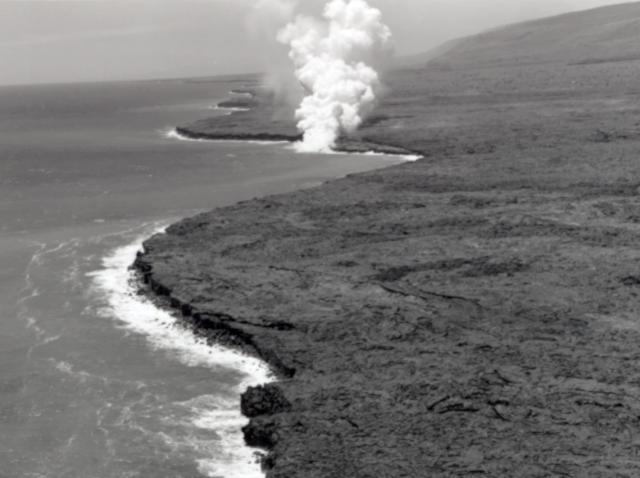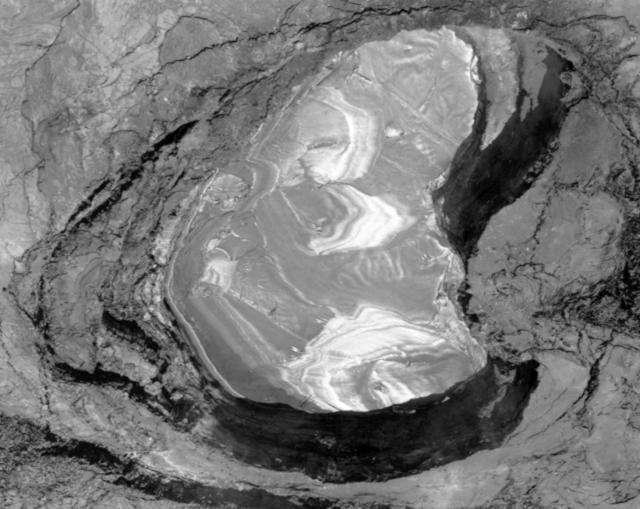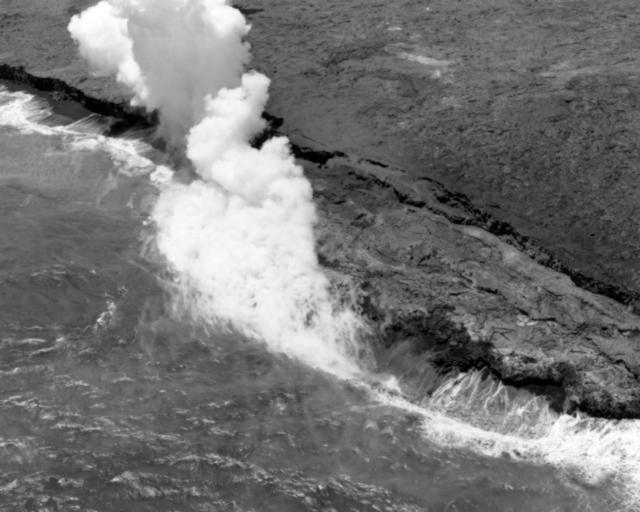Report on Kilauea (United States) — March 1989
Scientific Event Alert Network Bulletin, vol. 14, no. 3 (March 1989)
Managing Editor: Lindsay McClelland.
Kilauea (United States) Breakouts upslope slow lava bench growth at coast
Please cite this report as:
Global Volcanism Program, 1989. Report on Kilauea (United States) (McClelland, L., ed.). Scientific Event Alert Network Bulletin, 14:3. Smithsonian Institution. https://doi.org/10.5479/si.GVP.SEAN198903-332010
Kilauea
United States
19.421°N, 155.287°W; summit elev. 1222 m
All times are local (unless otherwise noted)
The level of the lava pond in Kupaianaha vent . . . varied from 21 to 25 m below the rim during March (figure 57). Lava breakouts from the tube system were relatively frequent near the major fault scarp at ~270-360 m elevation. Lava that emerged from the W tube system advanced to 150 m elevation, flowed ~120 m into forest, and passed near the Royal Gardens subdivision, causing no damage. Sporadic breakouts from the E tube produced sluggish pahoehoe flows. Lava advanced to the point where a December 1986 flow had . . . entered the Kalapana Gardens subdivision. Breakouts from the central tube had advanced down the E side of the flow field to 45 m elevation by the end of the month, but remained on top of older flows.
Lava continued to enter the ocean, building a lava bench (figures 58 and 59), although at a diminished rate during strong surface activity. The active portion of the bench was 200 x 80 m in March, and older inactive portions remained susceptible to collapse. Minor collapses occurred 3 and 17 March, then a major collapse on the 23rd at 0335 destroyed 65% of the bench, including almost all of the active section. By the end of the month, the bench was rebuilding and the new active portion measured ~170 x 20 m. Explosivity during the collapses was minor.
 |
Figure 58. View by J. Griggs (USGS) from the E side of Kīlauea's 1986-89 flow field, looking W. The steam plume marks the point where lava has been continuously entering the ocean since May 1988. |
Low-level tremor continued near vents on the middle East rift zone and where lava entered the ocean. Bench collapse was registered as a series of rockfall and acoustic signals at the Wahaula seismic station, 3 km away. Intermediate-depth, long-period events and tremor were intermittent beneath the summit. Bursts of deep tremor were centered 40-60 km beneath the S part of Hawaii.
Geological Summary. Kilauea overlaps the E flank of the massive Mauna Loa shield volcano in the island of Hawaii. Eruptions are prominent in Polynesian legends; written documentation since 1820 records frequent summit and flank lava flow eruptions interspersed with periods of long-term lava lake activity at Halemaumau crater in the summit caldera until 1924. The 3 x 5 km caldera was formed in several stages about 1,500 years ago and during the 18th century; eruptions have also originated from the lengthy East and Southwest rift zones, which extend to the ocean in both directions. About 90% of the surface of the basaltic shield volcano is formed of lava flows less than about 1,100 years old; 70% of the surface is younger than 600 years. The long-term eruption from the East rift zone between 1983 and 2018 produced lava flows covering more than 100 km2, destroyed hundreds of houses, and added new coastline.
Information Contacts: C. Heliker and R. Koyanagi, HVO.



